By Jayden Kang and Ong Jun Ze
The gargantuan Dipterocarps and colossal canopy covers the sun, delaying sunrise by 15 minutes. The sun then ascends past the two Jelutong trees, and its warmth hugs us tight. Birds awaken and present themselves, bursting with song and melody. Birdwatching at Jelutong Tower and watching the late sunrises will always be a magical experience for us…
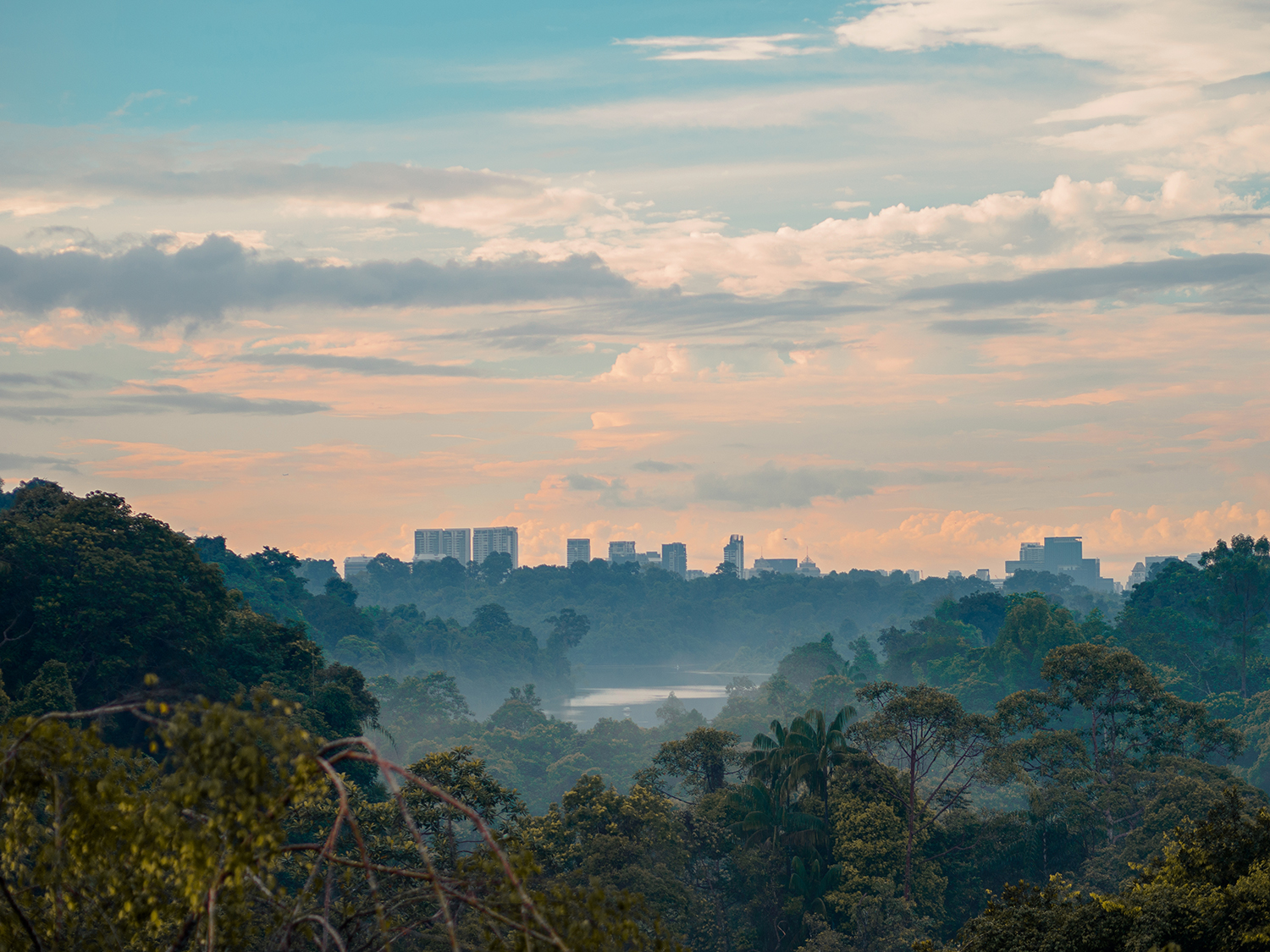
Jelutong Tower is a 7-storey tall tower, situated next to a valley which looks towards MacRitchie Reservoir. Located next to a few fruiting trees, Jelutong Tower allows birdwatchers like us to get good photographs of frugivores, as well as observe their feeding behaviour.
Our experience
We visited Jelutong Tower every weekend for about a year and a half straight, from December 2021 to April 2023. Almost every Sunday was spent hiking on trails running through mature, dense secondary forests. An abundance of free time and little commitments at the time meant that we could spend as much time as we wanted to birdwatch. Our aim was to get good photos or at least sightings of the Violet Cuckoo and Black-headed Bulbul.
When the first rays of sun start to peek through the dense canopy and the surroundings start to heat up, many birds come out to sing and establish their territories. Familiar voices like the monotonous pings of Pin-striped Tit-babblers and metallic rings of Greater Racket-tailed Drongos echo throughout the forest at first light, while others like the 3 common Pycnonotus bulbuls (Olive-winged Bulbul, Cream-vented Bulbul, and Asian Red-eyed Bulbul) take their turn in serenading us with their pleasant and bubbly songs.
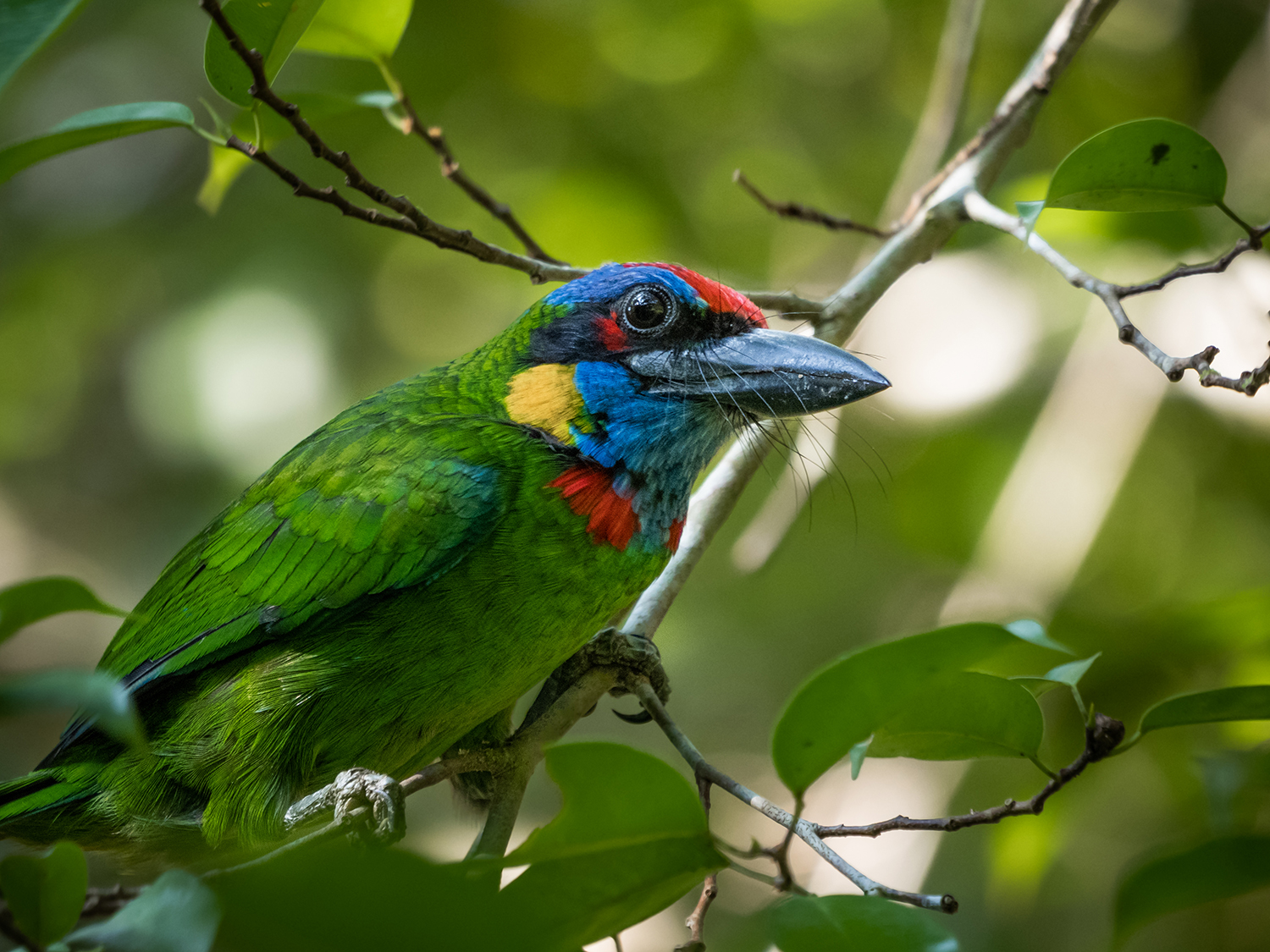
We observed that frugivores usually woke before the insectivores, and they seemed to forage and feed in fruiting trees before sunrise. Such trees also attracted some of the more elusive forest dwellers like the Thick-billed Green Pigeon and Greater Green Leafbird amongst the dozens of Pink-necked Green Pigeons and Bulbuls. Asian Fairy-bluebirds would noisily flit in and out of the foliage, grabbing low hanging fruit that others would not bother taking. There would usually be 1 or 2 Red-crowned Barbets slowly making their way through the buffet, snapping at anything that came in their way.
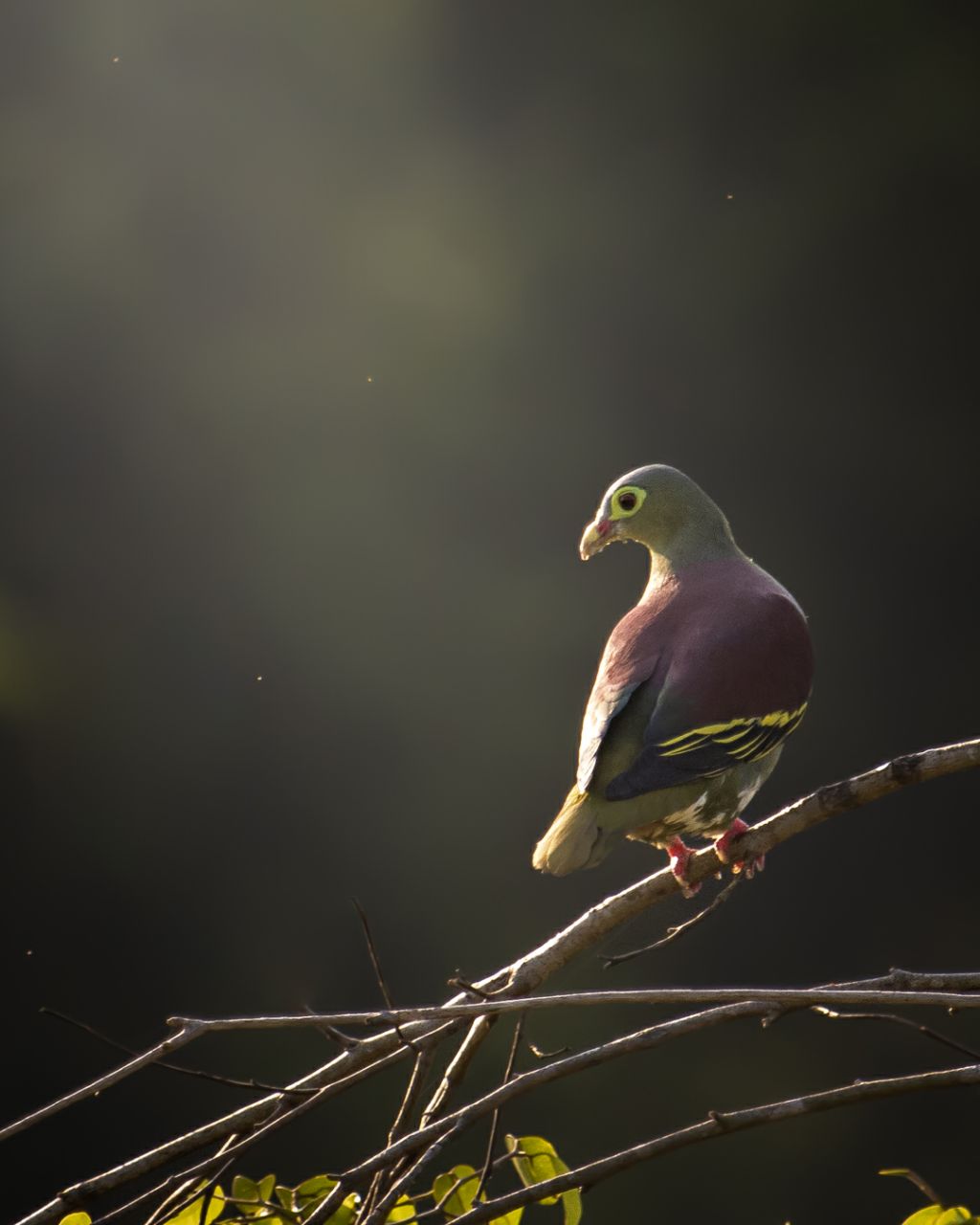
At the tower or at any fruiting trees in the Central Catchment, we also often found Blue-winged Leafbirds travelling in flocks of no less than three. They presented themselves with an entrance of songs of tweets and chatter, and fluttered around, drinking from flowers and the morning dew that collected on leaves.
 Blue-winged Leafbird drinking nectar at Jelutong Tower.
Blue-winged Leafbird drinking nectar at Jelutong Tower.
Crimson Sunbirds and Orange-bellied Flowerpeckers woke up a little later but never disappointed with their energetic personality and colourful displays. When the forest begins to warm, bird activity starts to spike, as more birds begin to wake from slumber and start looking for food. Peak bird activity is generally around 0800 – 0830. After this, birds stop singing and they feed silently whilst raptors start peering.
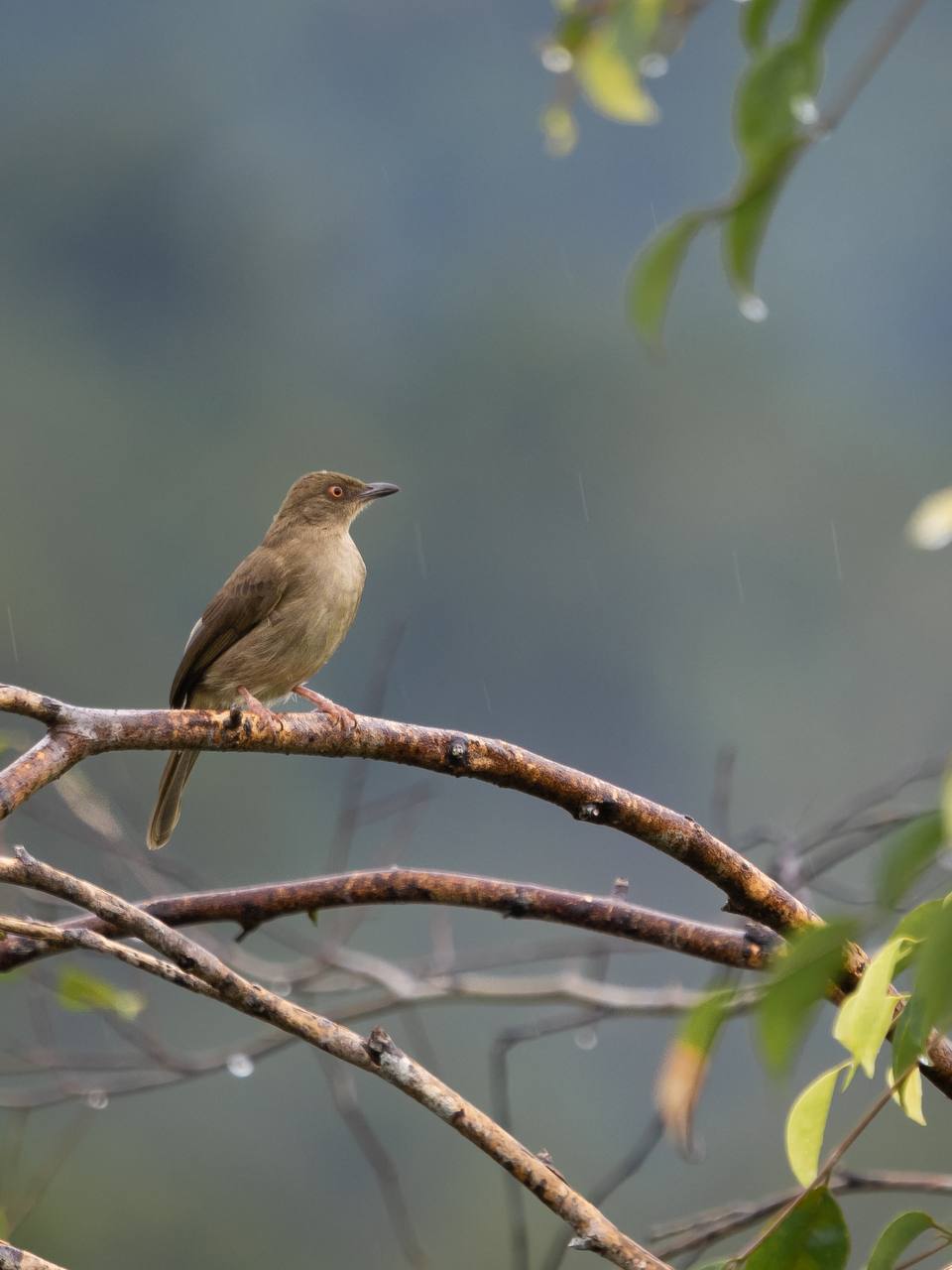
Occasionally, we found one or two Chestnut-bellied Malkohas foraging quietly high up in the trees. Their presence was often revealed by the chattering of smaller birds that followed along, waiting for the large and clumsy Malkohas to flush insects out of hiding. Some birds like the Greater Racket-tailed Drongos even tried to steal food right from the Malkohas beaks using their loud alarm calls as distraction. This phenomenon is known as a mixed species foraging flock, mixed flock or bird wave. Oftentimes, this will be the only source of bird activity after the dawn chorus.
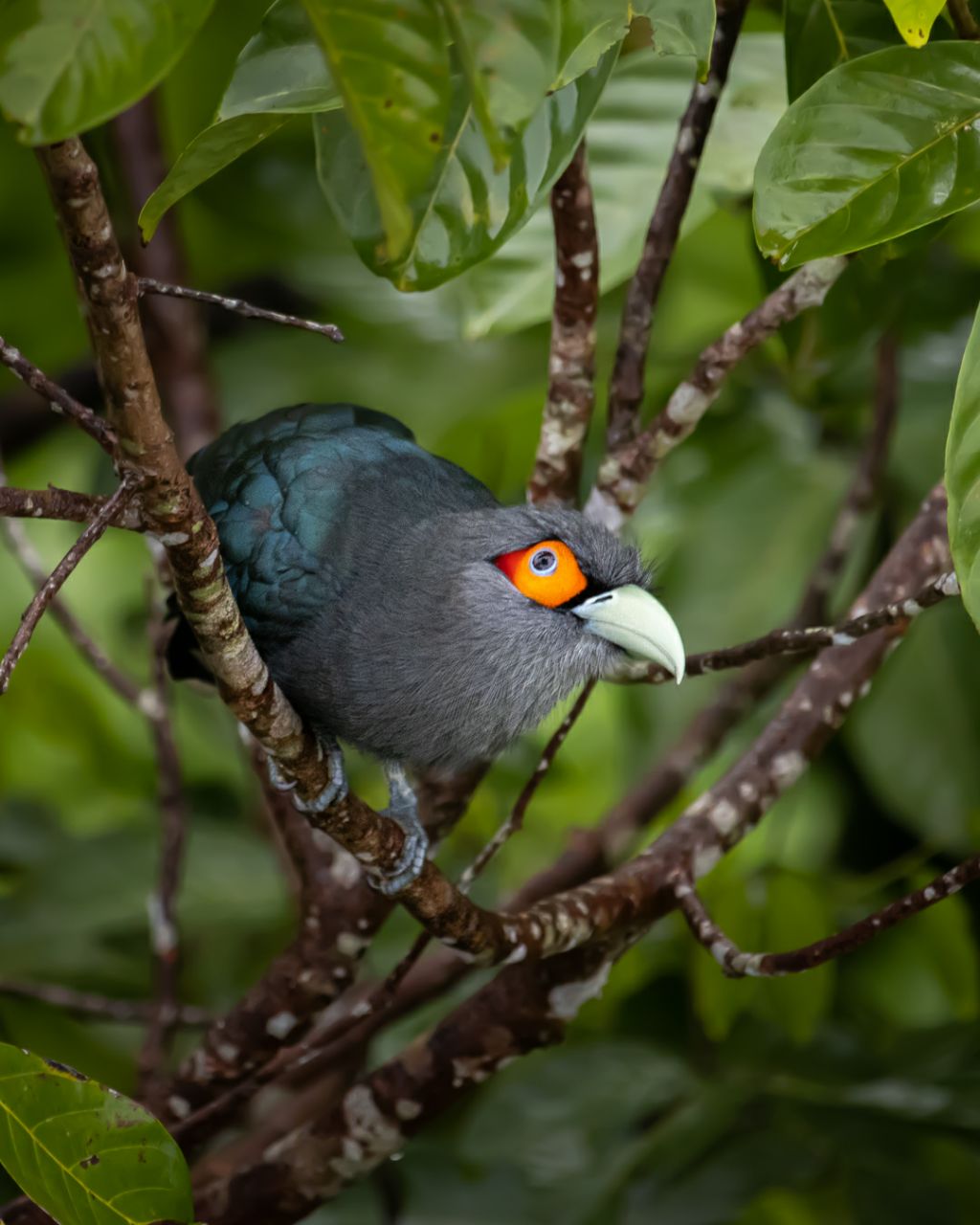
Breeding season begins in late March, and birdsong is plentiful as birds attempt to impress potential mates and gather nesting materials. We remember when a pair of Asian Fairy-Bluebirds sent gushes of wind down our hair as they flew right over our heads, carrying tiny sticks and leaves to their incomplete nest. But activity is almost halved a month later, as birds are busy nesting and parenting, and only one parent can forage. Once all the juveniles fledge and fly in June, bird activity increases as the parents begin to bring the young to explore.
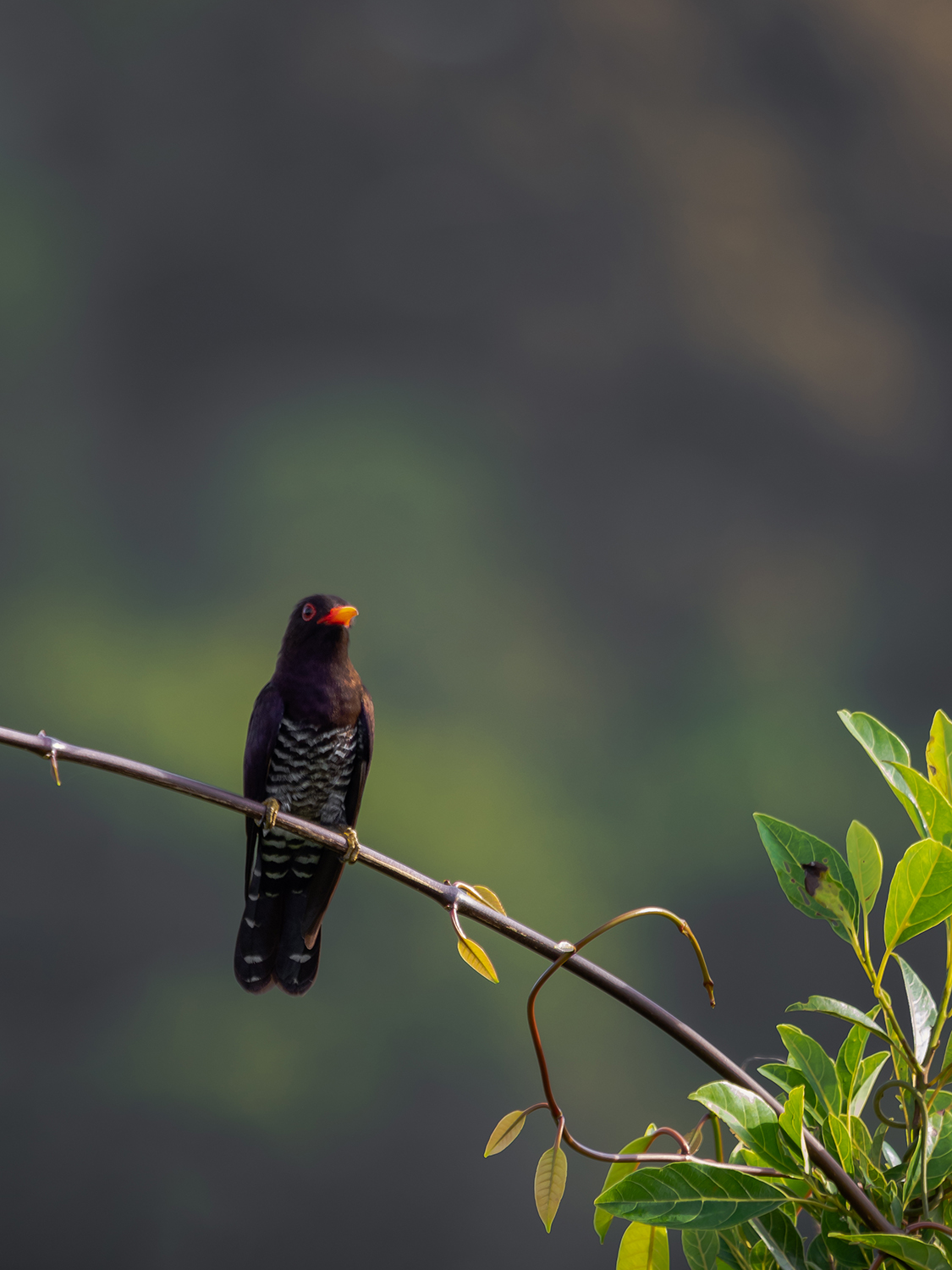
0900 was when the Violet Cuckoo began his rounds, looking for a mate. And after a year of searching since 21 December 2021, we finally got it on 5th February 2023! It was a long and tedious game of gamble and chance, but we’d say it was very worth it. We’re still missing the Black-headed Bulbul and await its return.
Bird Activity
The graph here shows the estimated amount of bird activity at Jelutong Tower, based on the number of species spotted by us. The amount of birds we get every trip varies, but follows similar trends. The sunrise greets us with plenty of birds, but the afternoon sees a large plateau in activity. For some reason, frugivores just decide to hide, whilst insectivores like the Pin-striped Tit Babbler, and Greater Racket-tailed Drongo, continue to hunt.
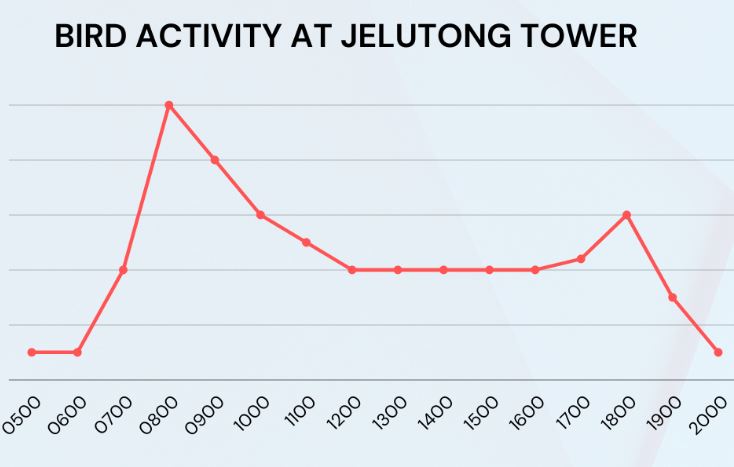
If you’re looking to get a taste of it yourself
How to get to Jelutong Tower
There are multiple entrances to Central Catchment Nature Reserve. Windsor Nature Park, Macritchie Reservoir, and Rifle Range Link. To enter from Windsor Nature Park, you must hike about 3.2 km to reach Jelutong Tower, and the terrain is sloping and tiring if you are not exercising regularly. To enter from Bukit Timah Nature Reserve, through Rifle Range Link, you also hike for about 6 km too, but the terrain is flatter and easier as you will be walking along the tarmac Rifle Range Road. You can also have somebody drive and drop you off at the end of Rifle Range Road, where the trailhead of Rifle Range Link is, and you only need to hike 1.6 km to the tower! If you hike to Jelutong Tower from Lornie Rd, through Macritchie Reservoir, the distance is about 2.4 km.
Hiking Experience
The only toilet in southern Central Catchment Nature Reserve is in Ranger Station, and the other toilets within the nearest 10 km are at Windsor Nature Park, and Bukit Timah Visitor Centre! Thankfully, though, the trails here are easy to walk on, just that some portions are paved with bricks or crushed stone, which can be tough on your ankles. So do be cautious about where you step, rolled ankles hurt!
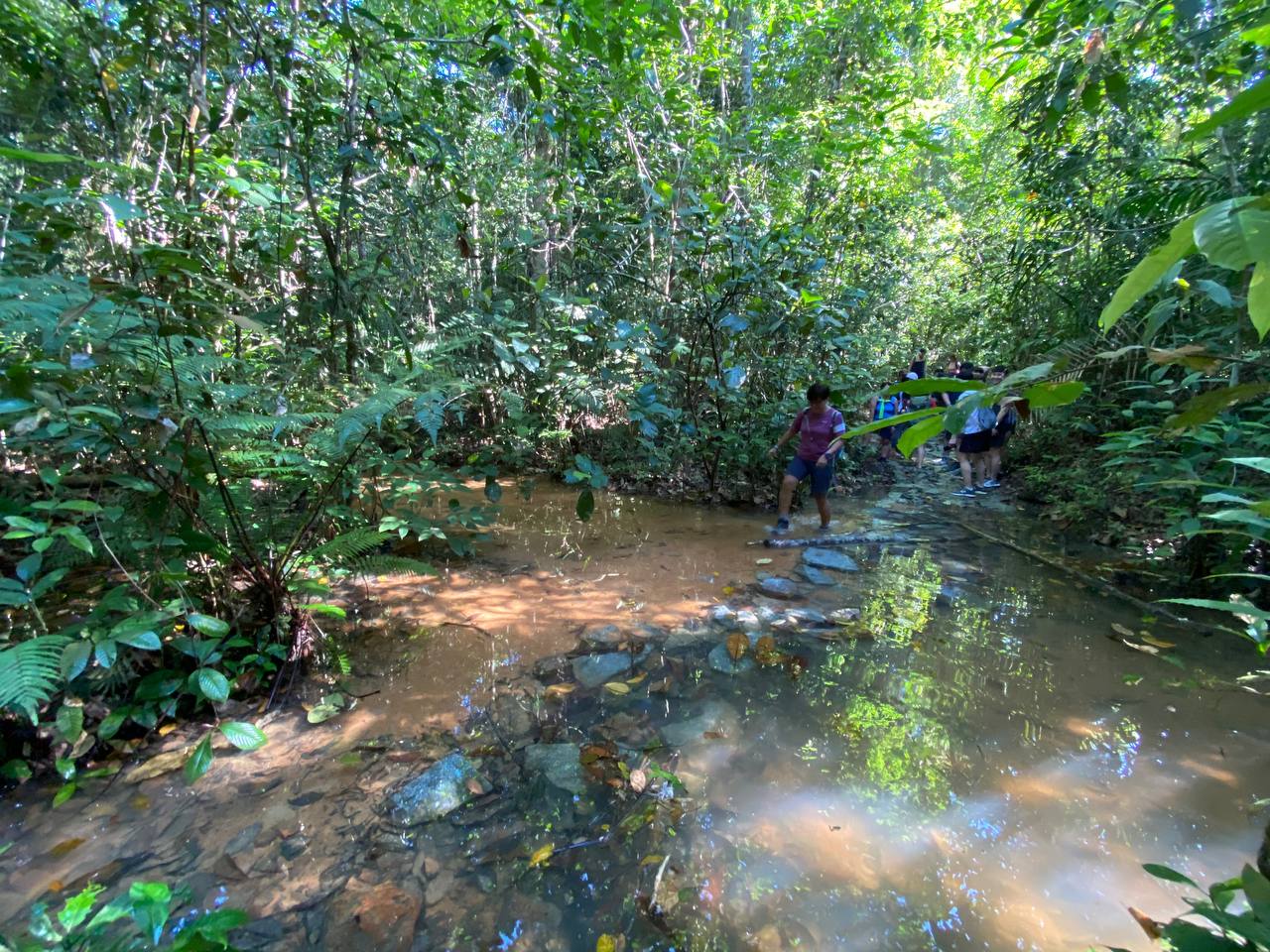
Take note there is a stream crossing past Dillenia Hut on Rifle Range Link. The water level can fluctuate between different days, with changes that amount to 30-40 cm in water height.
Do not spray mosquito repellent within the nature reserves, but rather protect our delicate freshwater forest streams by applying such products before starting your hike.
Enjoy the Central Catchment Nature Reserve, and we hope that you’ll enjoy Jelutong Tower as much as we did!

